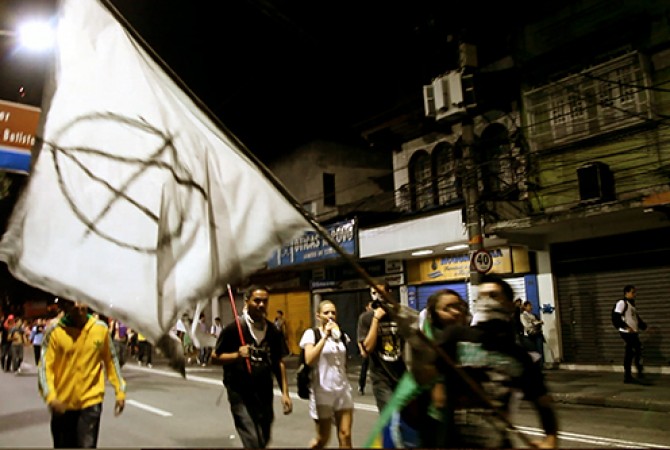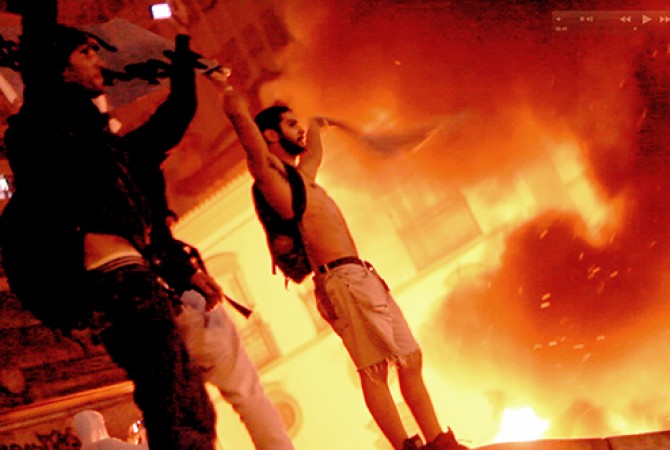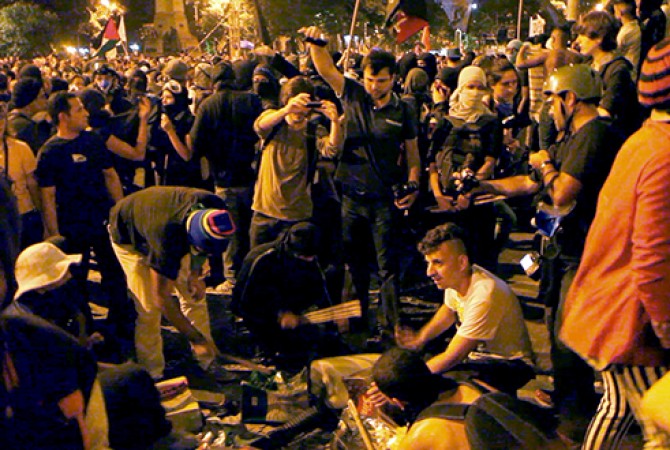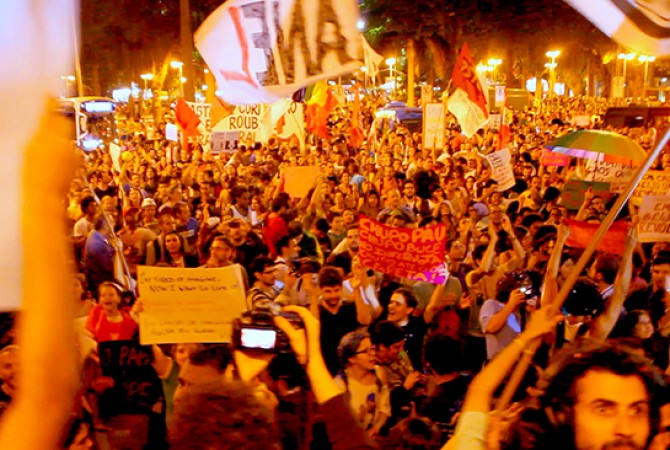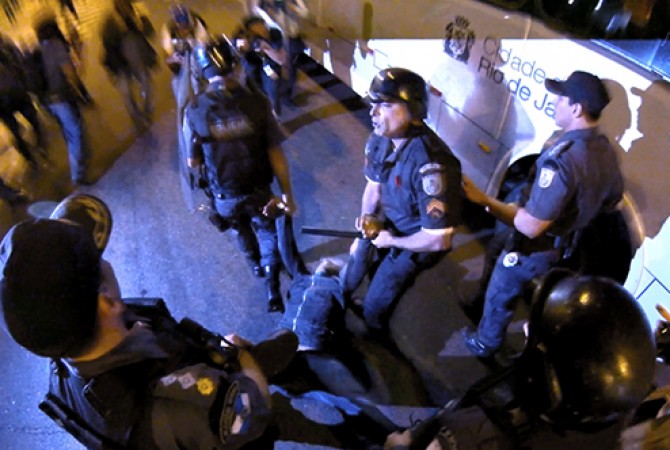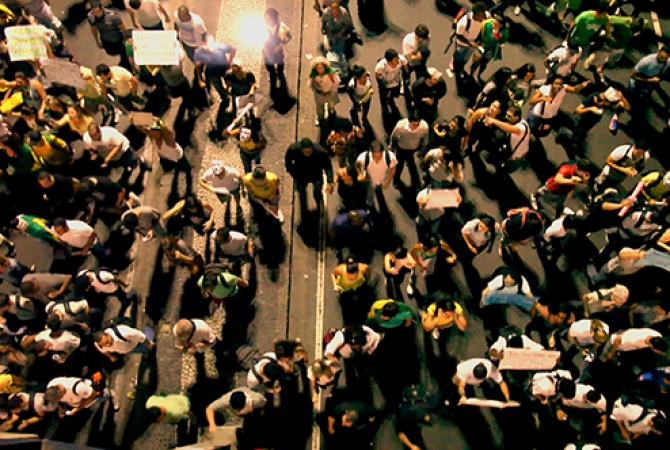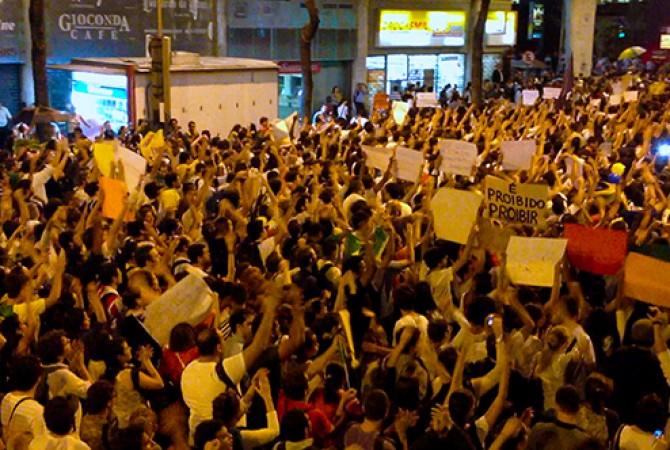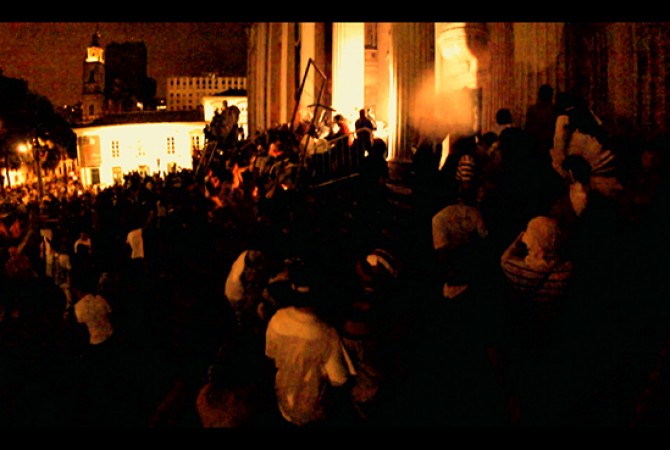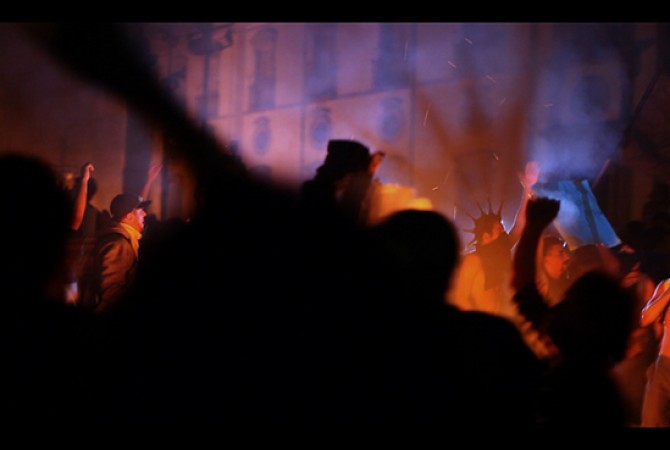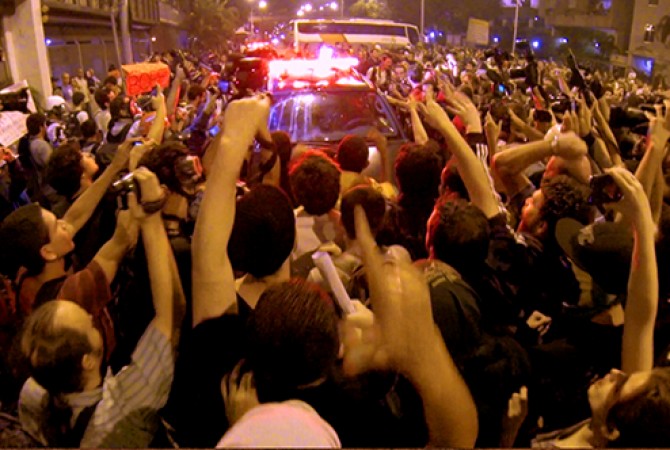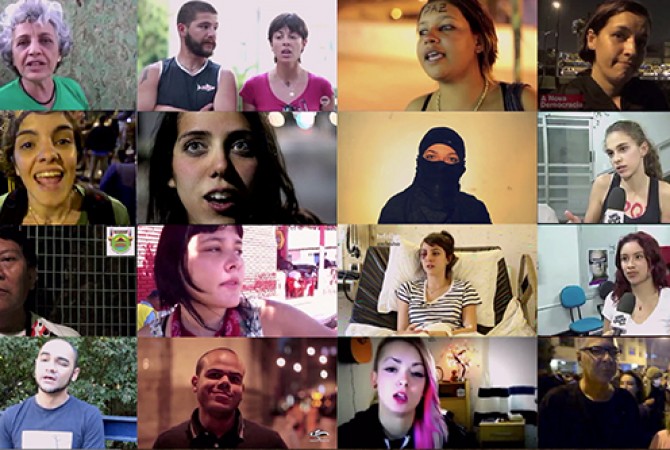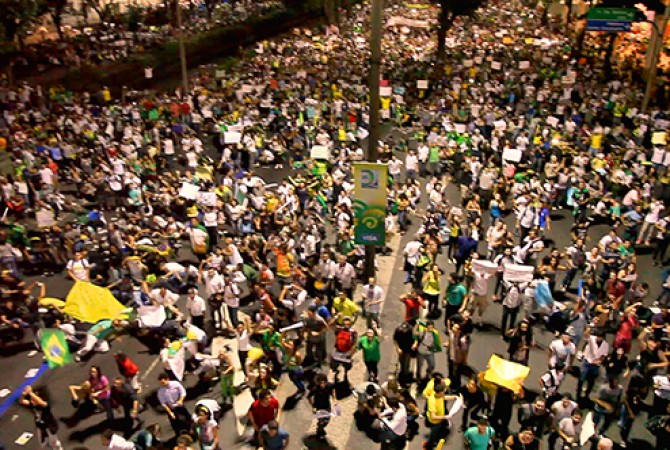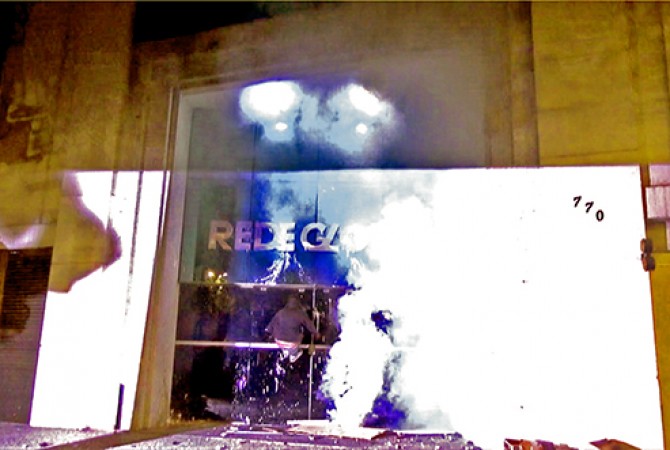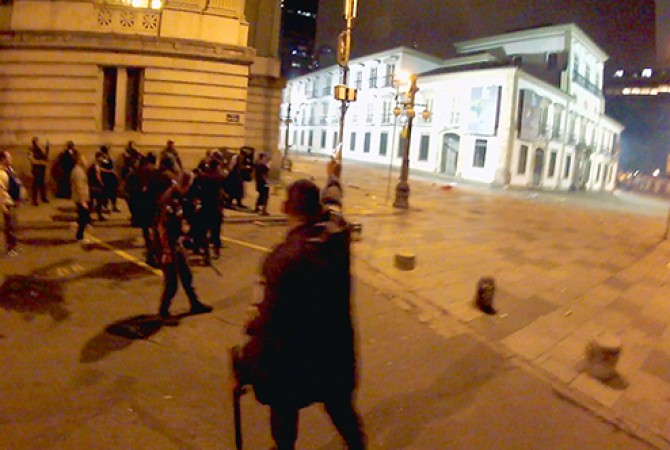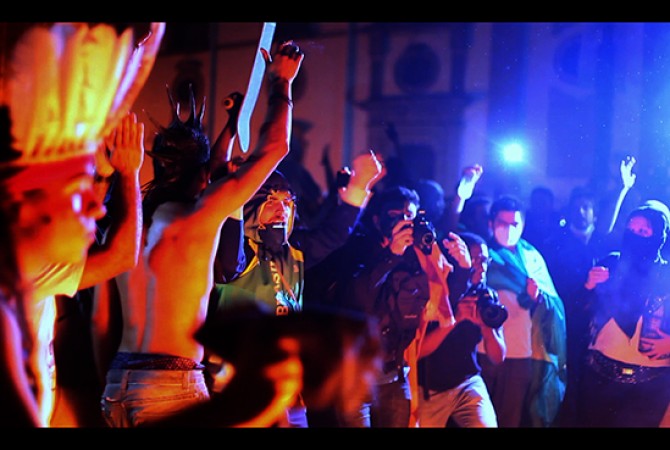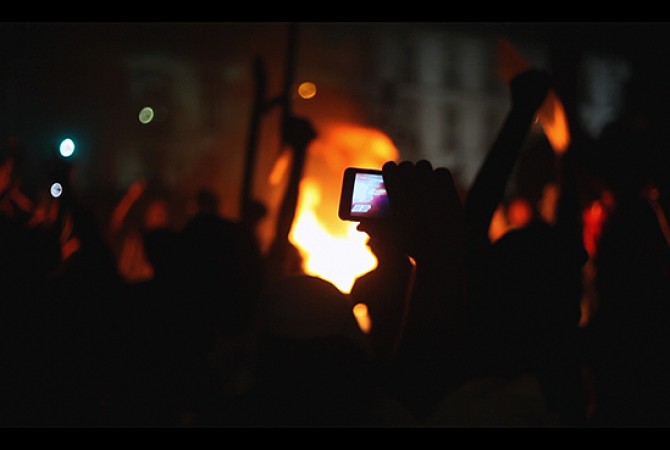Vinegar Syndrome1
¡NoPasaran!
More than a movie about the 2013 Brazilian street manifestations, Vinegar Syndrome is a film manifesto. Chronologically charting the days of the protests and how they were reported in the media and the subsequent consequences of these reports in the alternative media, the film screenplay shows us that its suggestive title of media deterioration is indeed an appropriate reading of the facts.
Rather than presenting these facts through a narrator we chose to present the sequence of events as they happened, prompting one of the most important revolutions in Brazilian public opinion as well as a media revolution that changed for everyone the way in which we watch TV and read the daily newspapers.
The film’s production process also incorporated anarchist ideals that are reemerging in contemporary society and the kinds of structural forms of organization apparent on the web. In keeping with this spirit, the film’s credits, director, editor, screenwriter, and photographer are consigned to the collective ¡NoPasaran!, a model that jeopardizes the Cinema as a creator of myths and winners.
Grasping how to operate in a perfectly organized organic chaos, one that presents itself in a totally horizontal form, we can see how today this format also proposes a new order of things, where a more horizontal society is possible.
From the mainstream media where before there only were spectators and now there are just as many content producers and where the media is more than ever in its history a two-way street, to the protests taking place in almost every part of the world, a heterogeneous organization can be organized without having a leader and with this it can become even stronger, like a great monster.
When we see the historical images in Sergio Eisenstein’s The Strike or Battleship Potemkin we can see how cinema manages in a sublime way to convey this idea of great masses that come together and form another gigantic and organic body capable of overcoming great armies with weapons and tanks.
Watching this configuration form in the streets and its virtual concept progressively gain in stature and reflect in itself the actual body of the masses that took to the streets in 2013 is what the film manages to synthesize, and as such, may point to what this revolution may have been about.
Perceiving this synthesis it became inevitable to reproduce this “body” into our production model, proposing in this way a new model for cinema, less egotistical and linked to the fetish of leaders and more connected with the collective art making that has been exploding in global contemporary visual arts.
Another enlightening fact is that the film presents; it doesn’t judge. Although it seems that it has a side, as no doubt every movie has, we prefer to show a montage of the facts and leave them for the audience to come to their own conclusion, if any.
It is not a film against this or that party or government. Being anarchist, it is against the whole system by which everything passes and continues to pass – where there are no exits. It does not interest us to condemn this or that politician, but rather to realize that politics, the way it is instituted, is the greater cause of all the misery and injustice in the world.
Revealing the system, presenting the structure that it often reproduces and how this addictive system is also doomed to the failure of its suicide organization – this is enough to prove its bankruptcy. Showing how these forces operate was VERY simple, considering the difficulty that we have in getting out of this structure, one that was in fact created by ourselves.
It’s important to note that the movie is not intended to pamphleteer towards a solution or represent one of the parties involved in this political process. We must remember that the film begins with a phrase by Brazilian filmmaker Eduardo Coutinho, for whom a good film is one that asks questions, not one that already has the answers.
So when we presented the film at the festival of film producers, critics often compared it to other films made around the same period, in a desperate attempt to diminish its potency, because it didn’t make any proposals and just offered more criticisms, so they said it was not as purposeful as it proposed to be.
These journalists missed that the proposition here is not synonymous with a simple proposal but rather with the substantive act of proposing. What then would this proposition be? The proposition of old is precisely what other films do on the subject. By contrast, the great strength of a new model is that it is not based on competition, but rather on the coming together of all instances of society that is already beginning to be organized as such, especially in social networks and in art.
Interestingly, however revolutionary the art of cinematography may be, the industry and show business within which it is wrapped up begins to look like a failed model. It is important that as artists we point to a new horizon for cinema, beyond the industrial hierarchy’s clear focus on profit. We propose a total and new model experiment for this medium.
Here it is no longer possible to perceive editing/montage as the simple act of making cuts and amendments; the montage in this film is much more than that; it represents a new form, not only a plastic form, but above all a form capturing the essence of what cinema could be today.
So together with the film’s structure, actions have been organized and other developments are yet to come, from taking on forms, such as installations and debates, to virtual and propositional meanings, and also making the material available to be re-edited, modified, criticized, and used in other films.
In this way we expand the discourse of the film and bring within its ambit other parallel and no less important discourses. With its propositional form, the film directly engages and is not just seen as something illustrative or worse pamphleteering. Our images have already been used in some other movies like Rio em Chamas (Rio on Fire), for example.
We believe that in time we will have a festival only of films related to this period and this will be a natural development, not of our film, but of a larger movement to which we are part and are just another link in the network, neither better, earlier or larger than the others, but stronger because of these connections, without a doubt.
With that understanding our collective has no hierarchy, limitation or rule and as a collective organization of art, it is fully open and even desires the participation of outsiders, the anonymous and people who may not even know they are helping us.
We believe that art like life is something that happens naturally. The less manipulated by the market and by the idea of competition and division, the closer it will be to art. All these connections that may arise, whether brought by the film, the website, social networks, other future media, or simply by that of being seen with the same naturalness of the events and developments of life – in this way cinema is transformed into something more latent, more pulsating and more alive.
_
1 The film’s title in Portuguese is É tudo mentira (Translation: It’s all a lie). However, the collective choose the different title of Vinegar Syndrome in English drawing a potent parallel with the chemical deterioration reaction internal to the film medium. For more information on the syndrome.



